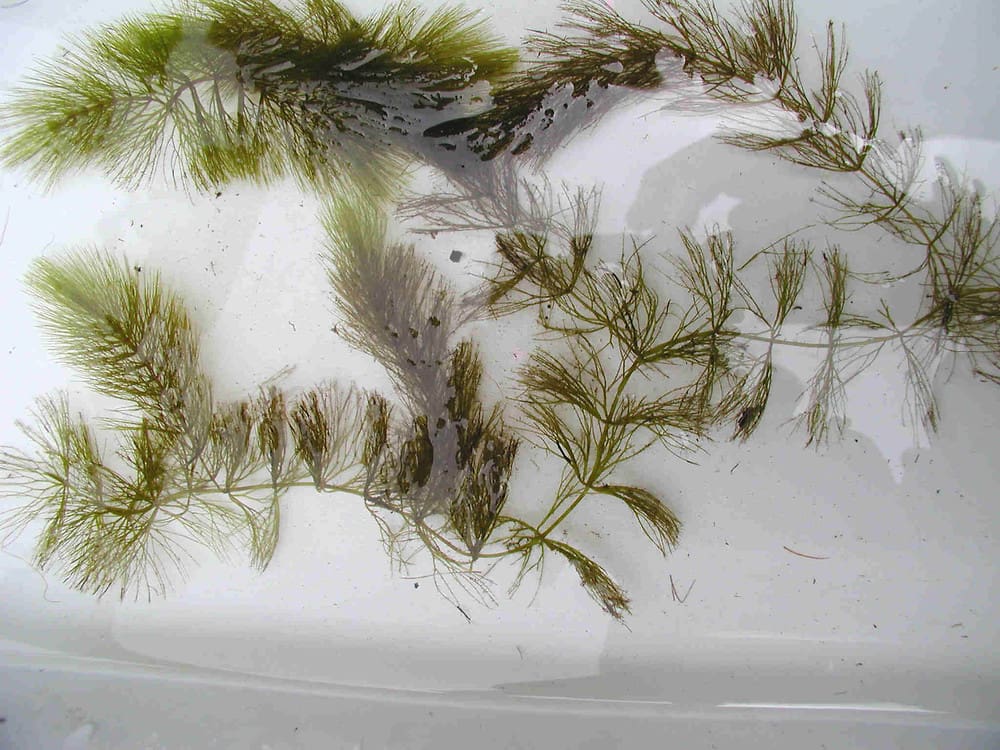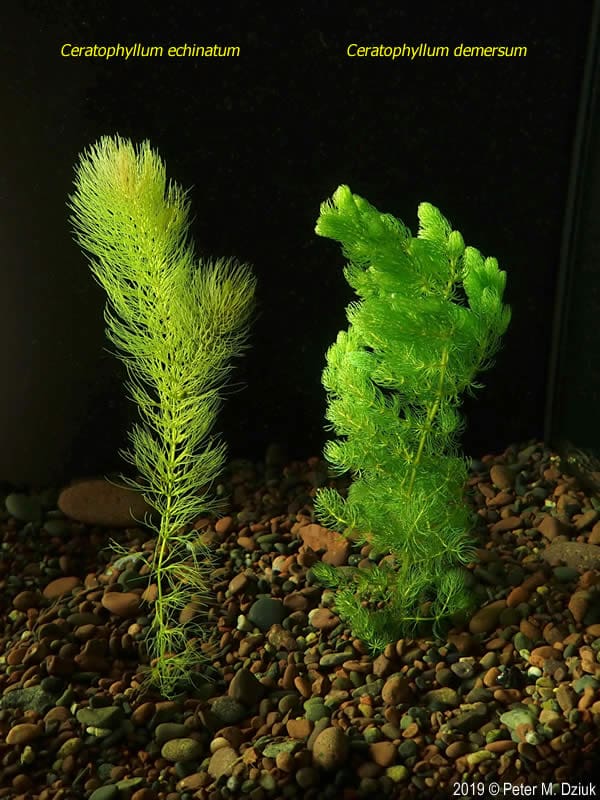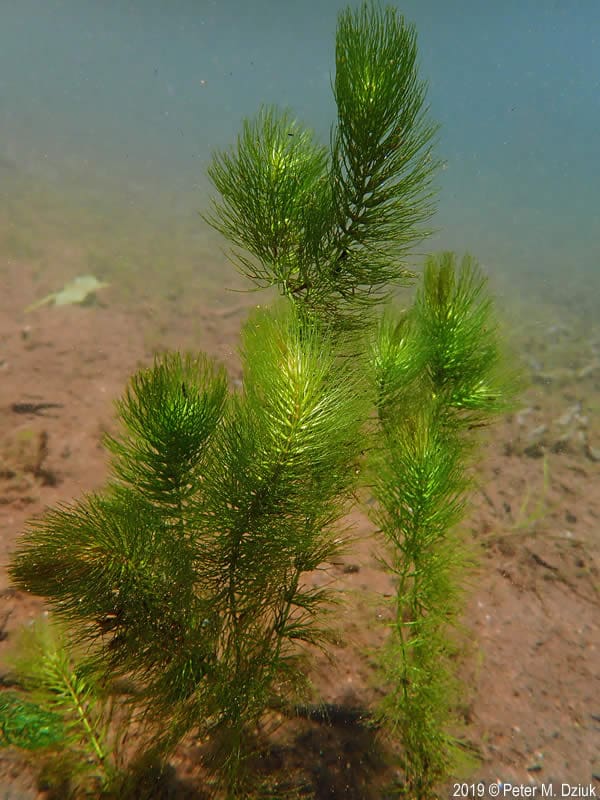You are embarking upon a rigorous inspection of Ceratophyllum Echinatum, an aquatic weed that is often eclipsed in the limelight by better-known algae and pondweed species. Throughout this comprehensive exploration, you will cultivate a robust understanding of its physiology, distribution, and ecological implications, spurring intellectual growth and fostering a deeper appreciation for the complexity of aquatic ecosystems. Within the scope of this article is also an in-depth examination of its evolutionary background, survival strategies, and the potential impact it poses within varying aquatic environments. This scholarly discourse will undoubtedly provide a solid foundation upon which further investigations can be initiated.

Basic Description of Ceratophyllum Echinatum
Ceratophyllum Echinatum, also known as spiny hornwort, is a type of submerged aquatic plant that belongs to the Ceratophyllaceae family. This plant is notable for its unique appearance and the distinct role it plays in the ecosystems it inhabits.
Scientific Classification
In terms of scientific classification, Ceratophyllum Echinatum belongs to Plantae Kingdom and falls under Tracheophytes subkingdom. Its division is Tracheophyta and the class is Magnoliopsida. Belonging to the Ceratophyllales order and Ceratophyllaceae family, it finds its genus in Ceratophyllum and the species is specifically C. Echinatum.
Physical Attributes and Characteristics
Ceratophyllum Echinatum is characterized by needle-like leaves that are rough to touch due to their spinous surface. The plant tends to have a bushy appearance, with well-branched stems that form extensive underwater thickets. It is predominantly green in color and generally reaches a size of about 15-30 centimeters in length.
Habitats and Locations Found
Being an aquatic plant, Ceratophyllum Echinatum primarily grows in freshwater bodies like ponds, lakes, and slow-moving rivers or streams. It can be found in numerous locations around the world, including but not limited to North America, Asia, Europe, and Australia.
Reproductive Characteristics of Ceratophyllum Echinatum
Ceratophyllum Echinatum’s reproductive strategies are well-suited to its aquatic environment and play a key role in its widespread distribution.
Types of Reproduction
This plant reproduces via both sexual and asexual means. The sexual reproduction involves production of flowers and pollination, while asexual reproduction typically takes place through the partitioning of plant fragments.
Maturity and Life Span
The maturity of Ceratophyllum Echinatum usually takes place within a short period of time after germination, often within a few weeks. The plant’s typical life span ranges from two to five years, depending on environmental conditions.
Reasons for High Reproductive Success
The plant’s high reproductive success can be attributed to its effective propagation strategies, rapid growth rate, and high dispersal ability, which ensure it quickly proliferates in suitable habitats.

Photosynthesis in Ceratophyllum Echinatum
As an aquatic plant, Ceratophyllum Echinatum has adapted to perform photosynthesis underwater.
Adaptations for Underwater Photosynthesis
One of the fascinating adaptations of Ceratophyllum Echinatum is its ability to perform photosynthesis without the aid of roots. As a free-floating plant, it absorbs carbon dioxide and nutrients directly from the water.
Role of Photosynthesis in Growth and Reproduction
Photosynthesis is crucial for the growth and reproduction of Ceratophyllum Echinatum. The photosynthetic process enables the plant to generate the energy it requires to grow, reproduce, and survive in its aquatic environment.
Ecological Role of Ceratophyllum Echinatum
Ceratophyllum Echinatum plays a significant role in maintaining the ecosystem balance in aquatic habitats.
Role in Aquatic Ecosystems
In aquatic ecosystems, Ceratophyllum Echinatum contributes to water filtration and oxygenation. By absorbing nutrients, it aids in limiting the growth of harmful algae and in improving water quality. The plant also provides habitat and food sources for microorganisms and small fish.
Relationship with Other Aquatic Organisms
Interaction of Ceratophyllum Echinatum with other organisms in the aquatic chain is complex and multilayered. While it serves as a habitat and food for some organisms, it also competes with other aquatic plants for resources.

Ceratophyllum Echinatum as an Aquatic Weed
While Ceratophyllum Echinatum has ecological importance, it can also become invasive and pose challenges to aquatic environments and human activities.
Impact on Water Bodies
When Ceratophyllum Echinatum proliferation is unchecked, it can form dense mats that cover the water surface. These mats hinder light penetration, deplete oxygen, and alter the aquatic environment, negatively affecting biodiversity.
Effects on Human Activities
Ceratophyllum Echinatum can also restrict human activities by impeding navigation, recreational activities such as swimming and fishing, and even blocking the operation of irrigation and power-generation systems.
The Spread and Control of Ceratophyllum Echinatum
The spread of Ceratophyllum Echinatum and its control pose significant challenges to environmental managers.
Factors Influencing Spread
The plant’s fast growth rate, high reproductive ability, adaptability to different environmental conditions, and potential to spread via water currents, wildlife, and human intervention, all contribute to its rapid spread.
Methods of Control and Eradication
Controlling and eradicating Ceratophyllum Echinatum usually involves physical, chemical, and biological methods. Each technique has its own advantages and disadvantages and the use of an integrated approach is often recommended for effective control.

Ceratophyllum Echinatum’s Adaptations and Survival Mechanisms
This plant has developed several adaptive features and survival mechanisms in response to its aquatic environment.
Structural Adaptations
There are several structural adaptations that Ceratophyllum Echinatum possesses. These include the needle-like leaves for optimal light absorption and the lack of roots, which allows movement with water currents and autonomous nutrient absorption.
Physiological Adaptations
Physiologically, Ceratophyllum Echinatum exhibits tolerance to diverse water quality conditions, like variations in temperature, nutrient levels, and turbidity, enhancing its survival prospects.
Behavioral Adaptations
Regarding behavioral adaptations, the plant has the ability to adjust its buoyancy so as to remain within the light zone necessary for photosynthesis.
Threats to Ceratophyllum Echinatum
Despite its resilience, Ceratophyllum Echinatum can be negatively affected by various environmental and man-made threats.
Environmental Threats
Several environmental factors, such as extreme temperatures, storm events, and changes in water chemistry, can adversely impact the plant’s survival.
Human Activities Causing Declines
Human activities like water pollution, habitat destruction, and invasive species introduction can also pose threats to Ceratophyllum Echinatum.
Diseases and Pests
Ceratophyllum Echinatum can also be affected by certain diseases and pests, which can cause damage to the plant and potentially result in population declines.

Ceratophyllum Echinatum in Research and Science
Ceratophyllum Echinatum offers valuable research opportunities due to its unique characteristics.
Significance in Scientific Studies
It plays a significant role in studies related to water purification, light penetration, and photosynthetic efficiency in water.
Findings from Recent Research
Recent research has explored the plant’s potential in the bioremediation of water, its growing impact on freshwater biodiversity and potential evolutionary developments.
Uses of Ceratophyllum Echinatum
Although viewed predominantly as a weed, Ceratophyllum Echinatum does have some beneficial uses.
Use in Water Treatment
It can be employed in water treatment due to its nitrate and phosphate absorption abilities.
Use in Aquariums
Ceratophyllum Echinatum is also valued in the aquarium trade for its attractive appearance and its role in maintaining water quality by absorbing excess nutrients.
Medicinal Uses
Moreover, Ceratophyllum Echinatum has been identified to possess some medicinal properties, making it a potential resource for pharmaceutical applications.
In conclusion, Ceratophyllum Echinatum is a diverse and flexible plant with a wide range of adaptations and survival mechanisms, allowing it to thrive in a variety of aquatic environments. Despite being associated with some negative impacts, its potential benefits for water treatment and ecological balance underscore the importance of further research into its roles and potential uses.